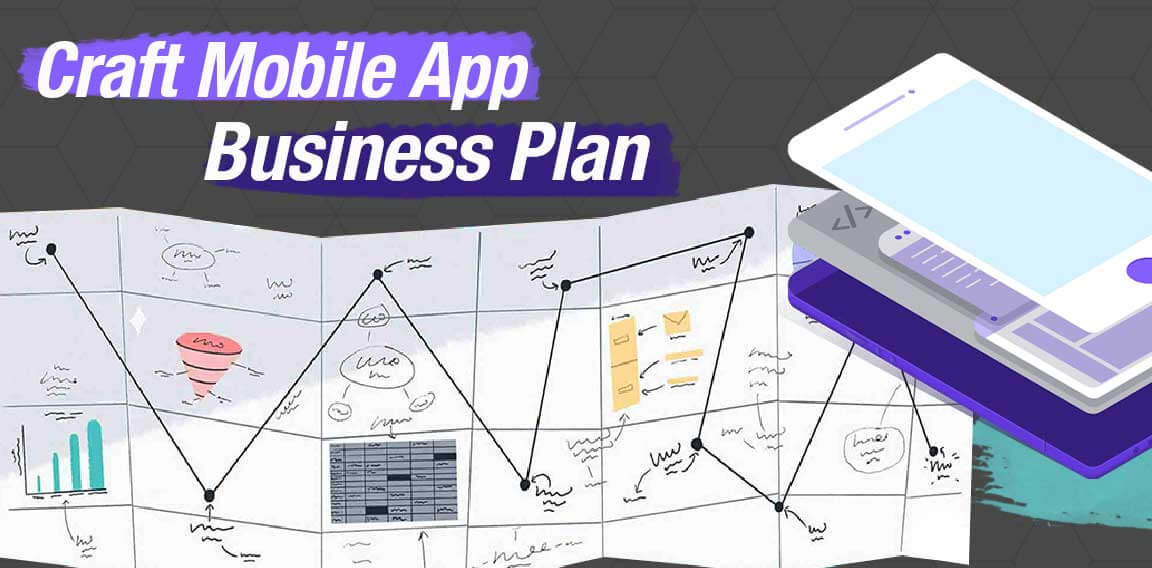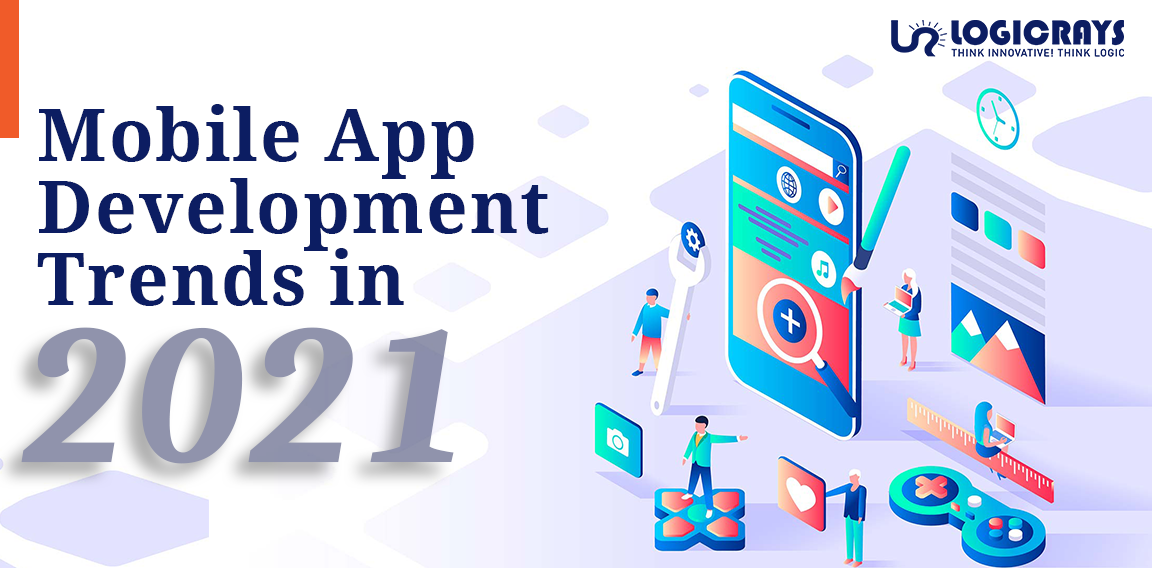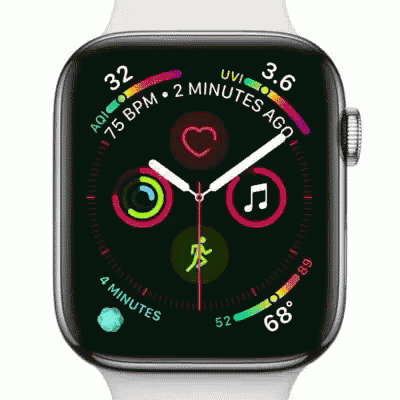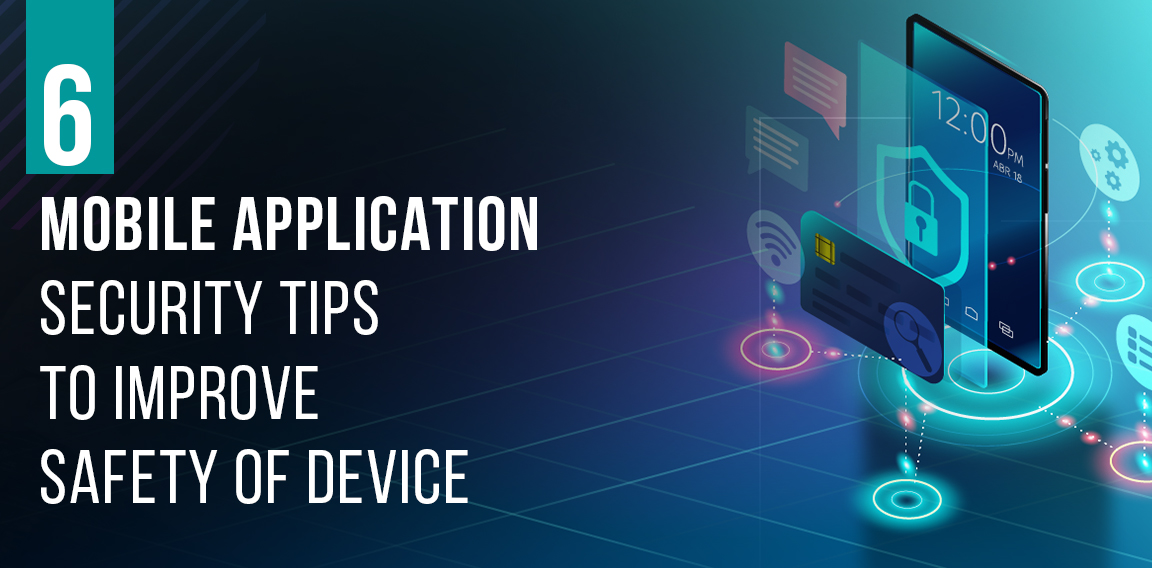The path to success in any business is one of the most hectic jobs in developing a business. But here, we all tend to choose how that will surely help you pass this phase as quickly as possible.
What is a Business Plan?
A business plan is beneficial when someone wishes to start a business because not everyone has money to invest and start their business. Most people need to take out a loan or approach investors to invest in their business. For that, you have to apply for a small business administration loan where you have to represent your Android app development business plan to earn that funds for investing in your own business.
Fact: Consumer spending on apps hit a record of $64.9 billion in the first half of 2021.
#1 Why Do You Need a Good Business Plan for Your Mobile App?
When your business depends on mobile app development, you need to make the business plan perfectly because starting a business without any roadmap can make you lose your business.
Mobile applications revolutionized the world in the digital era. But, most importantly, after the pandemic of Covid-19 took place, the number of unique, valuable apps increased because many businesses started working online.
A Business plan helps other people understand the purpose of your business, its structure, services & products you’re going to offer, financial plan, and so many more important things that will play a massive part in any mobile app business.
Now we are in a time where no work can be done without the help of any App.
Thus, mobile applications are one essential part of our lives now.
Every essential thing we need is now available online. Using social media to stay connected to the person they know, ordering food online, banking, playing games, etc., everything is possible because of mobile applications.
But to create the best mobile app, you need to have a perfect business plan because it is the core of any business.
Just like before constructing a building, you need a blueprint that has perfectly mentioned size, shapes, and drawings to design the building; for a mobile app, one needs a business plan before hitting Mobile Application development.
Here, we have identified the three significant reasons you need a Business Plan for a mobile app.
1. To Magnetize the Investment
As you may have guessed, the most apparent reason why mobile app companies create a business plan for developing an app is to get more and more funding. Of course, this is done to attract investors and even co-founders of a startup – the choice is yours, and occasionally you’ll need both.
An effective business plan will aid in representing your vision while also showcasing the scope of your mobile app concept and idea.
2. Reduction of Risk Factor
Risks are associated with spontaneous acts. Thus, whether and threats in business link with cost inefficiency and loss.
When you create a business plan, you’re essentially mapping out the entire journey of your company, which can give you valuable insight into the many unanticipated and likely hazards.
3. Helps You Keep Everything Under Control
While making any critical decision, it is pretty common to leave and forget essential aspects that can either make the foundation or break it. If you have a blueprint including points that work as a reminder of those crucial points, it becomes effortless to remember them easily. A business plan is that blueprint.
There are many reasons, but there are three main reasons you should create a good business plan for mobile app development.
So the main question is, “How will you write a perfect business plan for a mobile app idea?”.
In search of strategic sessions?
Let us understand your business thoroughly and help you strategize your digital product.
#2 Step-by-Step Business Plan for Mobile App Development
Without talking about anything else, let’s roll on the steps to build a robust business plan that will help you win in the business of mobile applications.

Step 1: Executive Summary
So, this is the time to introduce your business, which is the primary phase. This phase decides whether you’re going to be in this game or not. Whether you’re going to an Investor or get a loan for business, your mobile app executive summary should be to the point and easy to understand.
Note: All significant information should be included in your executive summary clearly and concisely. Do not write an executive summary for yourself; write it for the readers.
The executive summary depends on three main points, i.e. Summary, Unique Value Proposition (UVP), and Objective / Target.
Let’s go through these points one by one and get some excellent tips and tricks that will make your executive summary to the end and perfect.
1. Summary
The executive summary should list all the main takeaways from each of the significant sections of your business plan.
Each section should have its header or paragraph. It should be on the point.
2. Unique Value Proposition (UVP)
This section covers the unique selling proposition (USP), and it is simple. Here, you just have to describe the benefit of your offer and how you give a solution to your customer’s problem. Your UVP should make your Mobile app stand out from the crowd in at least one way.
Here is the list of questions you have to keep in mind while writing the USP.
- Which problem are you going to solve?
- How is your mobile application going to solve the main problem?
- What’s something unique that your mobile app will serve that no one else can offer?
3. Objective / Target
Here, you have to mention the primary purpose behind the mobile app. Once everything is said and done, everything comes down to this- The main goal behind your plan to achieve a successful mobile application. It gets better for others to visualize your short term plan and make them trust you. A startup should never end an executive summary without making an ask – explicitly about funding and capital.
Step 2: Problem Analysis
“If I were given one hour to save the planet, I would spend 59 minutes defining the problem and 1 minute resolving it.” – Albert Einstein.
We will directly start with giving you the main questions that you have to keep in the back of your mind while writing Mobile App Problem Analysis.
Question List:
- Which Problem are you trying to solve?
- What needs do your business fulfil?
- Which pain points are out there that you are going to solve?
Those are some key questions that you always have to keep under the note while writing problem analysis.
Key Idea
Investors, incubators, family & friends, and Banks are very enticed by a reliable problem statement. So make good use of representing it in astonishing ways. When you describe your problem analysis to investors, make sure that it makes them understand the main problem at first glance.
When you sit in front of your investor with your mobile app business plan, you want to make sure they can go on with it when they read the problem statement. So, if they identify more with the problem, they are much more likely to invest in it.
Also, investors, they’re looking for a big problem. They want to invest in it and do it if they find that your app solves a significant problem. So, bigger the problem; you’ll need more money for that.
The problem statement does; it helps you focus on really what’s important about the business. It has to validate business strategy overall. It will describe the purpose of your business and how uniquely your Mobile app stands out in the Playstore and Apple App Store.
Have a look at the example; you’ll be able to understand it much more clearly.
GrocceriesAtHome Problem Statement
Lifestyle today is hectic, and people don’t have time or energy to go out and buy fresh vegetables from the store and prepare the food. As a result, they’re cutting off their healthy food consumption, becoming more dependent on frozen food.
Things you should cover in a problem statement
- Articulates what the customer’s problem is.
- Define the pain point of customers.
- Mention how you’re going to fulfil the customer’s needs.
Step 3: Solution statement
Here, all you have to do is your recommendation of solving the problem. But you have to keep in mind that your solution should impact reality and bring a resolution to an actual issue.
As we discussed earlier, in problem analysis, your solution will speak for your business.
Key Idea
Your Solution Statement must tell a story about how you’re going to solve the customer’s problem, fulfill needs or remove their pain- and why you’re the best option.
This section will make it clear how you solve the customer’s problem, how you’re going to fill their need and how you’re going to remove their pain.
Let’s continue with the last example to understand it in a better way. GrocceriesAtHome is an app that provides a service of delivering vegetables at home. In this app, you get various categories that you can select from the nearby store options.
GrocceriesAtHome Problem Statement
GroceriesAtHome has created a time-saving and easy option to buy household stuff and get it at home.
- We allow our members to select the items of their choice by choosing various categories like vegetables & fruits, beverages, Non-veg food, beauty products, etc.
- We deliver groceries directly to your doorsteps.
- All food and products are original and newly manufactured.
With the help of this example, you’ll be able to understand how short, precise, and to the point, your problem statement should be.
Step 4: Business Description
In this section, you have to introduce your business, start by giving information about your organization and finishing with the mobile app plan. This part of your mobile app business plan will show investors or banks the corporate values your organization serves, like your mission, how you see your products and the key factors for the success of your product.
This section covers three different parts;
1. Company Overview
Here, you should describe your company in this manner:
- Type of business structure
- Company history
- Team
- Problem
- Statement of the concept
- Location of your company
Focus your mission statement on how you currently envision the procedures in your project, such as investor and lender input. The mission statement describes the current state of affairs, but the vision statement focuses on the future and your drive.
2. Company History
Describe your company’s background, how your team came together, and how you came up with your idea. You can also discuss the significant stages of your company’s development and the experience gained before the product’s introduction.
3. Management Team
Because your app development team is the core of the project, the team is generally the most significant portion of the section explaining the organization. Therefore, each person’s name, title, job experience, and responsibilities in the firm will be substantial. You might also enlist the services of an advisory council to assist you in making important decisions.
Experts on your advisory board should have prior industry experience.
Fact: Apple crosses 1 billion active iPhone users for the first time in 2021.
Step 5: Market Analysis
The state of the market should be the most critical component in realizing your app concept. Therefore, you should be aware of the present situation of your industry’s need, have up-to-date information, and be able to generate a short-term projection.
That is to say; you should have a marketing strategy in place. The market analysis part of your business plan demonstrates the project’s viability.
You may keep an eye on Apple’s cheat sheet to keep track of the popularity of mobile applications. For example, top paid, top free, and top-grossing apps may all be the App Store.
This section will cover two main parts i.e.
1. Market forecasts
Forecasting is an essential aspect of drafting a business plan for an app development startup’s success. When writing any business plan, such as a business plan for application development or a software startup business plan, forecasts from credible research firms such as Nielsen and Forrester are helpful. You may also include information on the number of companies in the mobile application market and the amount of money spent.
2. SWOT Analysis
A SWOT analysis is a method of strategic planning that allows you to give a structured description of your situation. It comes in use to investigate products, businesses, regions, or even countries. The acronym SWOT stands for “strengths, weaknesses, opportunities, and threats.
It’s perfectly normal for a firm to have flaws: knowing about them will serve as a powerful drive to find solutions and decrease any risks your company may face.
Step 6: Marketing Strategy
A marketing plan acts as a link between you and your customers, allowing your product to reach them. Moreover, you must persuade investors that such a bridge exists. Use the following marketing methods for your mobile app to be successful:
1. Investigate the target market
The first stage is to attract your target audience by focusing your offering on a specific demographic. The demographics, habits, internet behavior, and lifestyle of this target group should all consider. Next, examine how your ideal client will interact with your app.
2. Analyze your competitors
Competitor research is a part of business analysis. This data will assist you in highlighting the qualities that set you apart from your competition, improve your procedures, and resolve market issues.
3. Landing Page Creation
Making a landing page for your mobile app will help you reach a wider audience by informing readers about new features and updates. Make sure your page includes the application’s name, a description of its capabilities, and promotional videos, among other things.
4. Product Growth
Depending on the type of app startup, growing the user base differs, as does the business plan for accessing different industries. A major advertising campaign, for example, makes sense only in markets where consumers understand your product or service and its utility. Take, for example, Uber and Houseparty, both of which have successfully launched enormous marketing efforts.
5. App Rating
To enhance your app’s rating in app store search results, improve its attributes, such as by reducing the mobile app’s load times. A high ranking in search results will attract potential buyers’ attention.
Step 7: Financial
Finally, you’ll be able to move on to the financial section of your business plan. To move forward, you must have a clear understanding of the type of financing you require. Furthermore, a potential investor should comprehend the cash you need when reading this section of your company plan.
All of the primaries predicted models, including profit and loss, cash flow, balance sheets, start tables, and value, are typically anticipated for three to five years in the financial model. To establish the actual cost and distribution of assets, your financial record must include the following components, each with a clear explanation.
1. Startup Funds
Inform your investors of the costs that will Ensure. Because such figures may fluctuate, we recommend making fair estimations and allowing for unexpected expenses.
Make a list of all costs that you will have to cover for a startup:
- One-time costs
- Regular expenses (e.g. electricity bill, rent, insurance)
- Variable Costs (e.g. salaries)
- Fixed Costs
2. Funding Required
The most common and best way to strategise your mobile app business funds are:
- Advertising
- Charge for the extra features (In-app purchases)
- Charge for app
- Subscriptions
3. Revenue model
Keep in mind that a revenue model is all about expertise. As a result, we should begin writing revenue models by doing research. And make it a point to learn how to make money. Then, as a result, combine the information you’ve gathered from other companies with the experience and knowledge you’ve earned from your own.
We’ll need essential bits of data for that, which are the ones that make up a robust revenue model.
Here are some tactics you should keep in mind while creating the mobile app business model.
- Make sure that the app idea is unique and helpful.
Consider your history. Also, pay attention to your strong qualities. Finally, pick something that will aid your development. If possible, use a revenue prediction template. It has the potential to be highly beneficial. Remember that your revenue model should demonstrate your originality as well as the services you offer.
- Make a list of long-term revenue sources and potential investors.
Look for people who are knowledgeable in your field. Consider the long-term project you’re working on. Also, think about different sources of income that aren’t always the primary ones for bringing in money or keeping the business solvent. These may turn out to be essential aspects of your company in the future.
- Review and adjust the model on the timeline.
Revenue models are constantly changing. Business settings, places, and scenarios may vary over time. Keep an eye out for what’s working and what’s no longer working. It needs to wrap up! If that’s the case, double-check needs any other successful document; a business plan must demonstrate that your company is viable and profitable.
Your Mobile App Development Business Plan Should Result in Your Success
If you need a helping hand in any stage – let us know. Our business development team will become your helping hand.
Let’s wrap up!
It’s not easy to write a business plan for a new mobile application or a mobile app startup. Thus, knowledge of your industry, qualitative and quantitative analysis, and practical research should all come into use to support your notion.
The more viability, the bigger the investment opportunity.
A business plan makes you creative to inspire you to make it an instrument for implementation. Trust us; it is a decisive factor in gaining funds. If you’re having trouble drafting your business plan for launching a mobile app, our skilled team of Mobile app developers at LogicRays Technologies is here to help you get started on this exciting journey and arrive safely at your destination!











